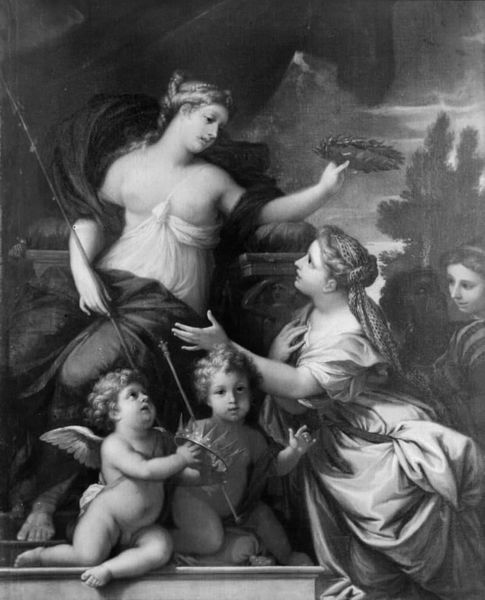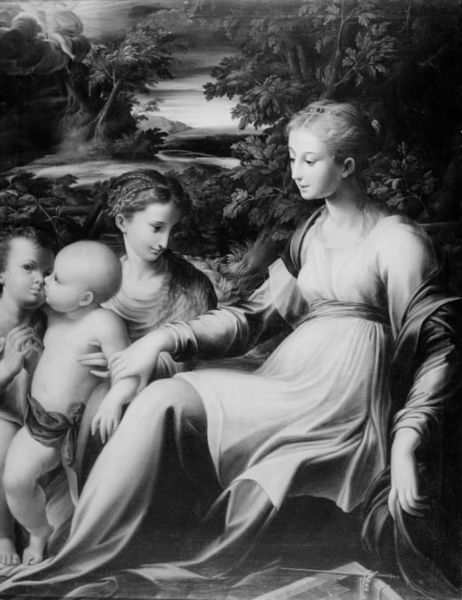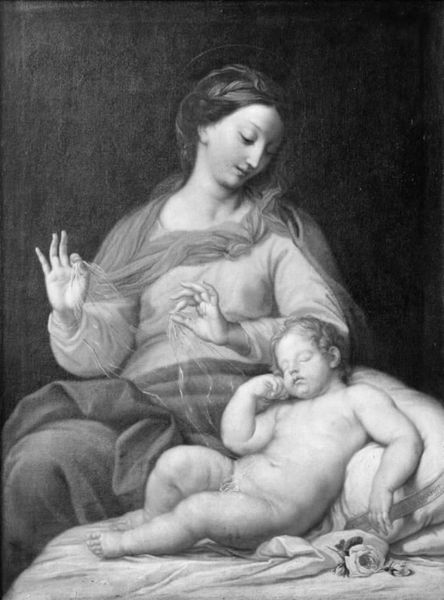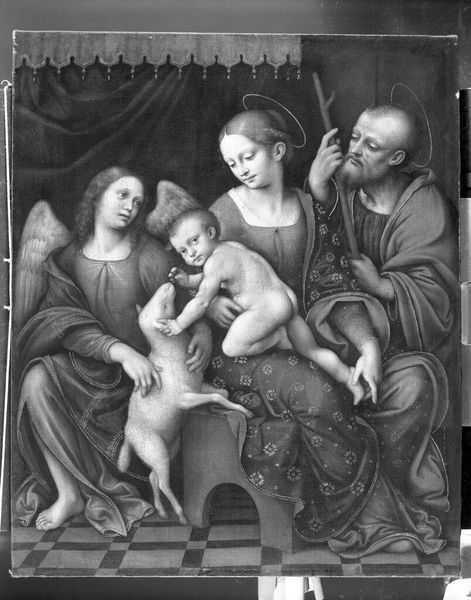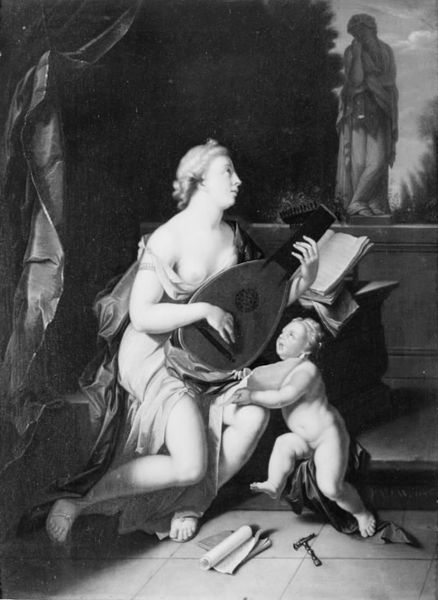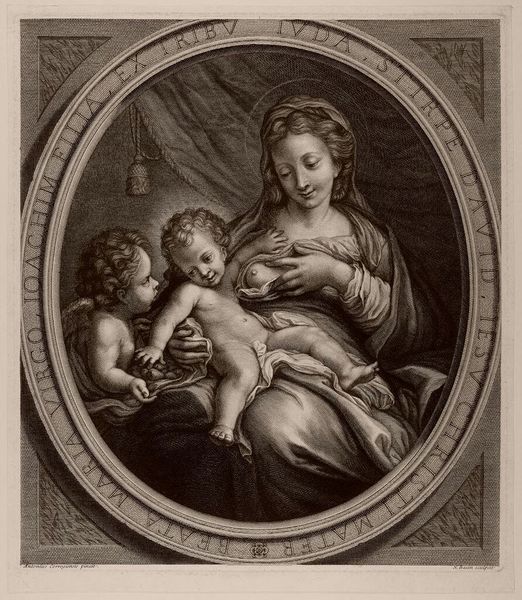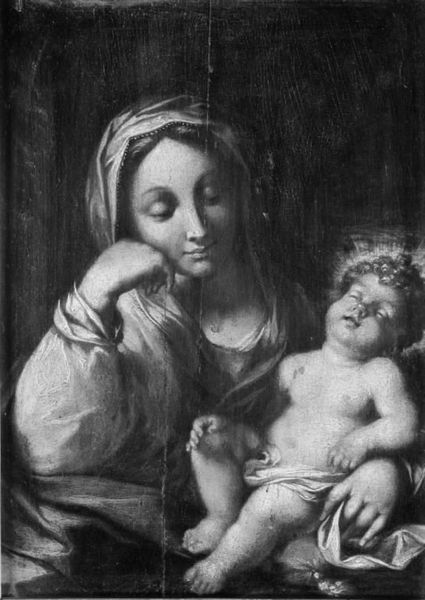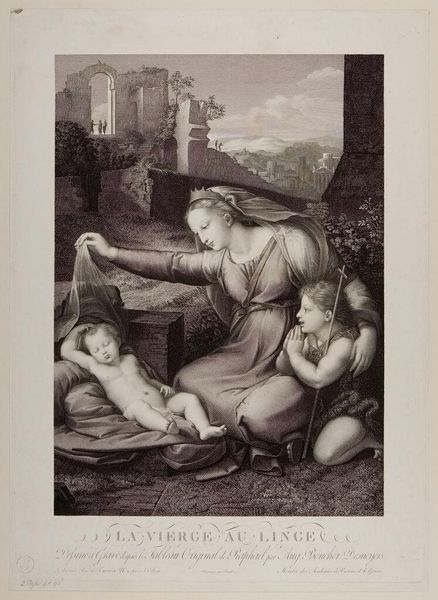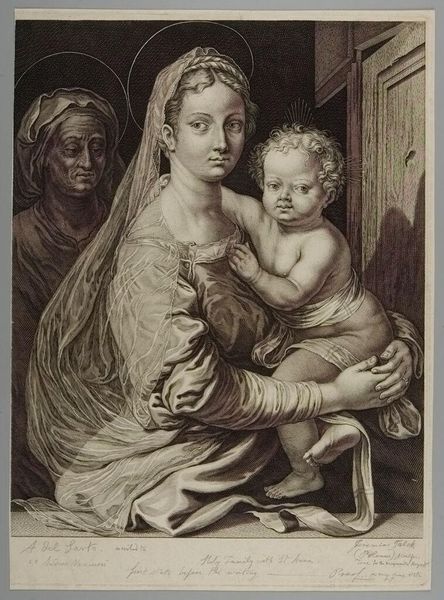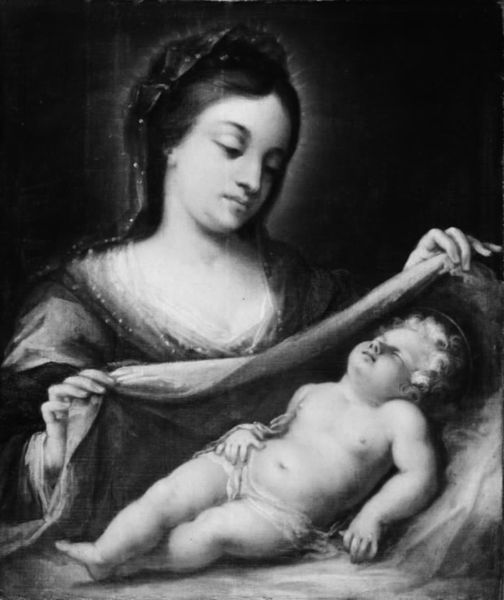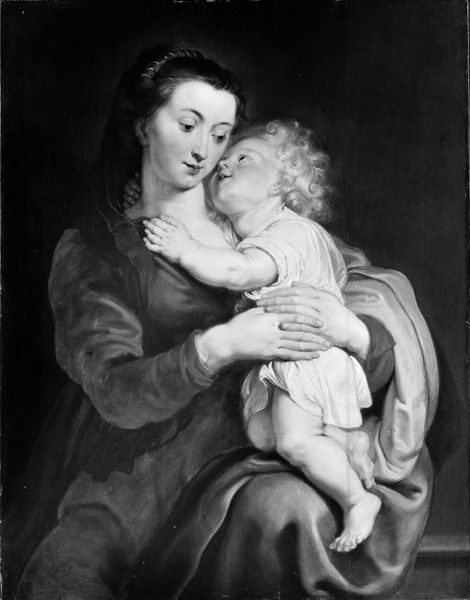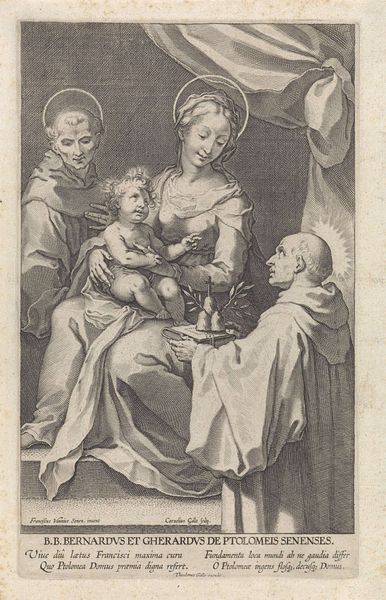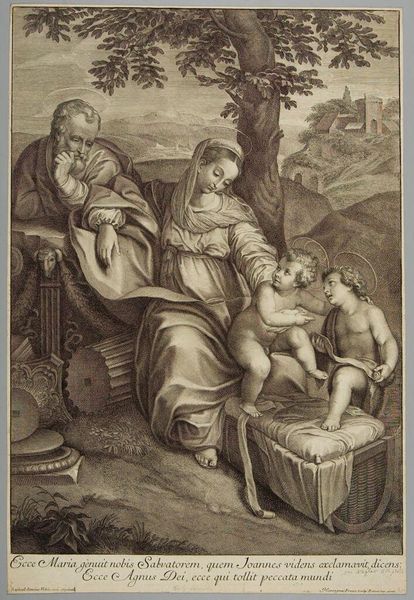
painting, wood
#
portrait
#
allegory
#
portrait image
#
painting
#
figuration
#
11_renaissance
#
group-portraits
#
black and white
#
monochrome photography
#
wood
#
history-painting
#
italian-renaissance
#
realism
#
monochrome
Dimensions: 99 cm (height) x 68 cm (width) (Netto)
Curator: Before us hangs “Mother with her Children,” a painting currently attributed to an anonymous artist, though clearly operating within the Northern European Renaissance tradition, likely produced between 1501 and 1550. Editor: My first impression is of muted austerity. The composition is classically arranged, the mother centered, stable, yet there’s a certain... gravity. It feels somber. Curator: It's an intriguing arrangement of forms, wouldn't you say? Note the maternal figure’s poised symmetry countered by the asymmetrical dynamism of the children's placement. Consider, too, how that foreground fruit bowl might function symbolically, drawing upon art-historical semiotics and traditions relating to fertility and the domestic sphere. Editor: Absolutely, but it’s that fruit which pulls me in, too. I see evidence of preparation—the grain of the wooden panel supports layers of ground, then paint application in glazing for that rich modeling. This suggests considerable craft investment beyond the idealization of the scene; the artisanal processes of the workshop resonate here, underscoring societal ideals of domestic production and labor. What were these workshops like, really? Curator: It’s plausible the painter might have intended for the group to reflect moralizing allegory of family values. Notice, too, the refined use of line throughout, circumscribing each figure, particularly noticeable given this image presents to us today largely as monochrome. Editor: If it was intended that way originally. We see the painting filtered, mediated as monochrome through technology—the screen’s material intervention colors our interaction now, even alters access to presumed authorial intent. What textures are being smoothed or amplified by this shift away from its material state of production? Curator: Fascinating questions. Focusing on this arrangement, what emerges as powerful is the balanced distribution of weight across the pictorial field, reinforcing an allegorical conception of both familial duty and maternal presence in this composition, in particular. Editor: So, we acknowledge it's more than the final form we analyze. To confront the artwork completely, to really "see" the painting, it must also involve an acknowledgement, if only fleeting, of human endeavor across its production to be realized. Curator: Yes. Considering this anonymous master’s approach—with sensitivity to those formal arrangements— we encounter both an idealized tableau, as well as that deeper symbolic structure about domestic relations which lies just underneath.
Comments
No comments
Be the first to comment and join the conversation on the ultimate creative platform.
